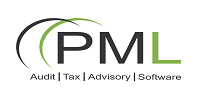Corporate Risk Management; Nigerian Perspective
 Corporate Risk Management; Nigerian Perspective
Corporate Risk Management; Nigerian Perspective
Nigeria is not exempted from the current volatility, uncertainty, complexity and ambiguity in the world today and the importance of risk management cannot be over emphasized especially with the consequences of deficit economy that we are currently experiencing.
The last global financial crisis has re-emphasised the importance of risk management. Some of the badly hit organisations are still licking their wounds. To forestall recurrence, financial regulators have become stricter and regulations also more stringent.
In compliance with stringent regulations, many Nigerian banks and insurance companies have established ERM departments merely because of regulatory reasons. Energy and manufacturing companies see health and safety department as their mirror of ERM, while IT and telecommunication companies see system audit, revenue assurance and security management as their pillar of ERM. But how can an organization, private or public, tell whether its risk management is good or good enough? What qualifies as a good enough risk management practices and of what benefit is a good-enough risk management practices?
While there is no doubt about what constitutes best risk management practices, what may be ambiguous is how “fit” is the best practice to the peculiarity of an organisation; hence the need to identify what risk management practices is good enough to suit a particular industry, the current market realities and available resources to an organisation is as well important. This is why leading/best risk management practices need to be customized, size-and-scope fit to a business entity. If not, the practice would be bogus, academic and impracticable.
The practice of risk management is currently at different stages across different industries and sectors that make up the Nigerian economy. An analyses of these practices is very important as well as a benchmark against the so called leading/best practice within the context our environment, is also inevitable.
At PML, we have identified five stages of risk management maturity – Prefoundation, Foundation, Basic, Mature and Advanced – based on specific risk management themes and the level of sophistication, process complexities and strategic initiatives of the organisation. This classification is not a one-size-fits-all and key features of each stage will come in subsequent write up.
The question that begs for answer is, where does your organisation risk management practices belong?
Sources; PML Professional Services; a growing risk and compliance, financial & investment advisory firm in Nigeria.


